Champion Hills offers an unforgettable golfing experience for all ages and skill levels. The course features 6718 yards of golf for a par 71 and showcases picturesque mountain views with meticulously contoured greens. The grandeur of the Blue Ridge Mountains is witnessed throughout this spectacular course, from lush valleys to mountain peaks to soaring green elevations up to 2595 feet. Designed by Tom Fazio, the Champion Hills course is consistently ranked among the Top NC Courses and holds the honor of being Western North Carolina's #1 Year-Round Course. It is no wonder why Tom Fazio refers to Champion Hills as his "Mountain Masterpiece."
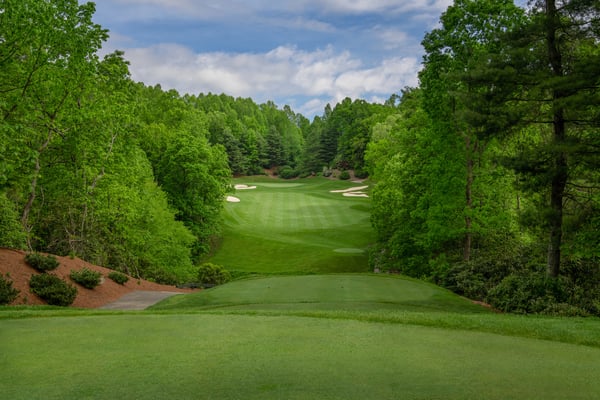

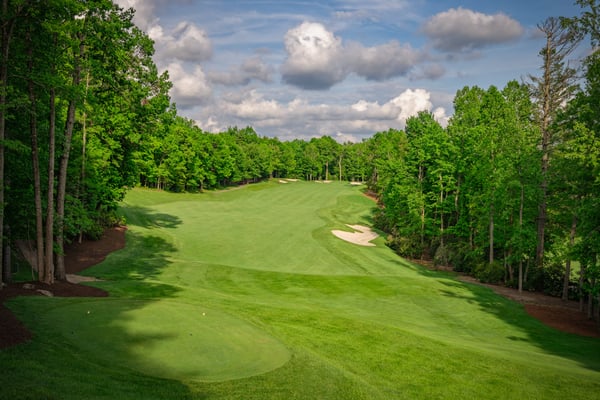
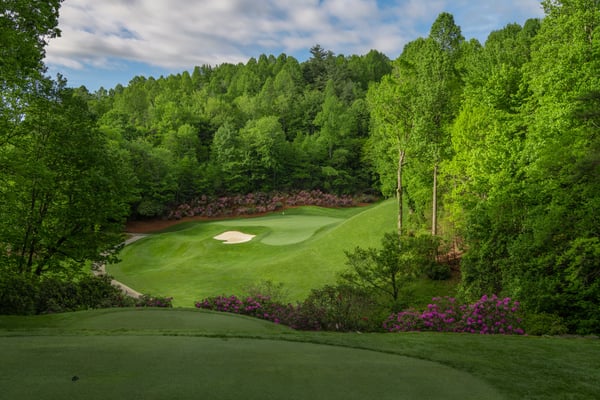
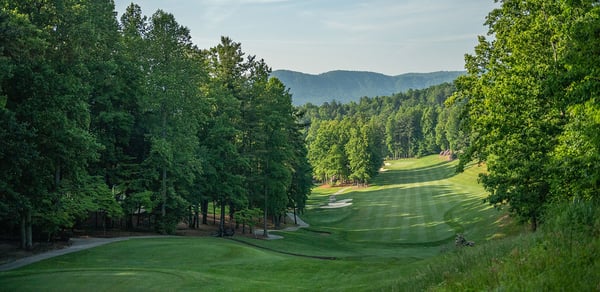


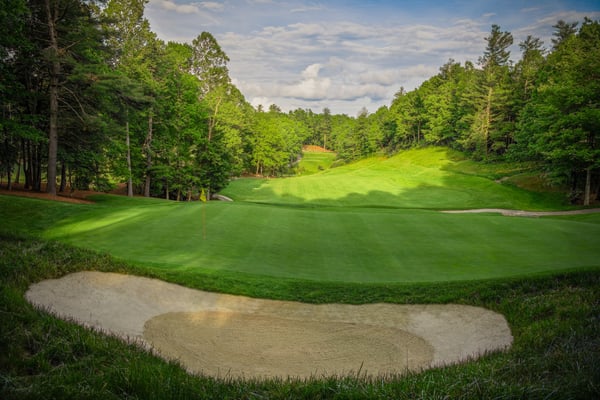



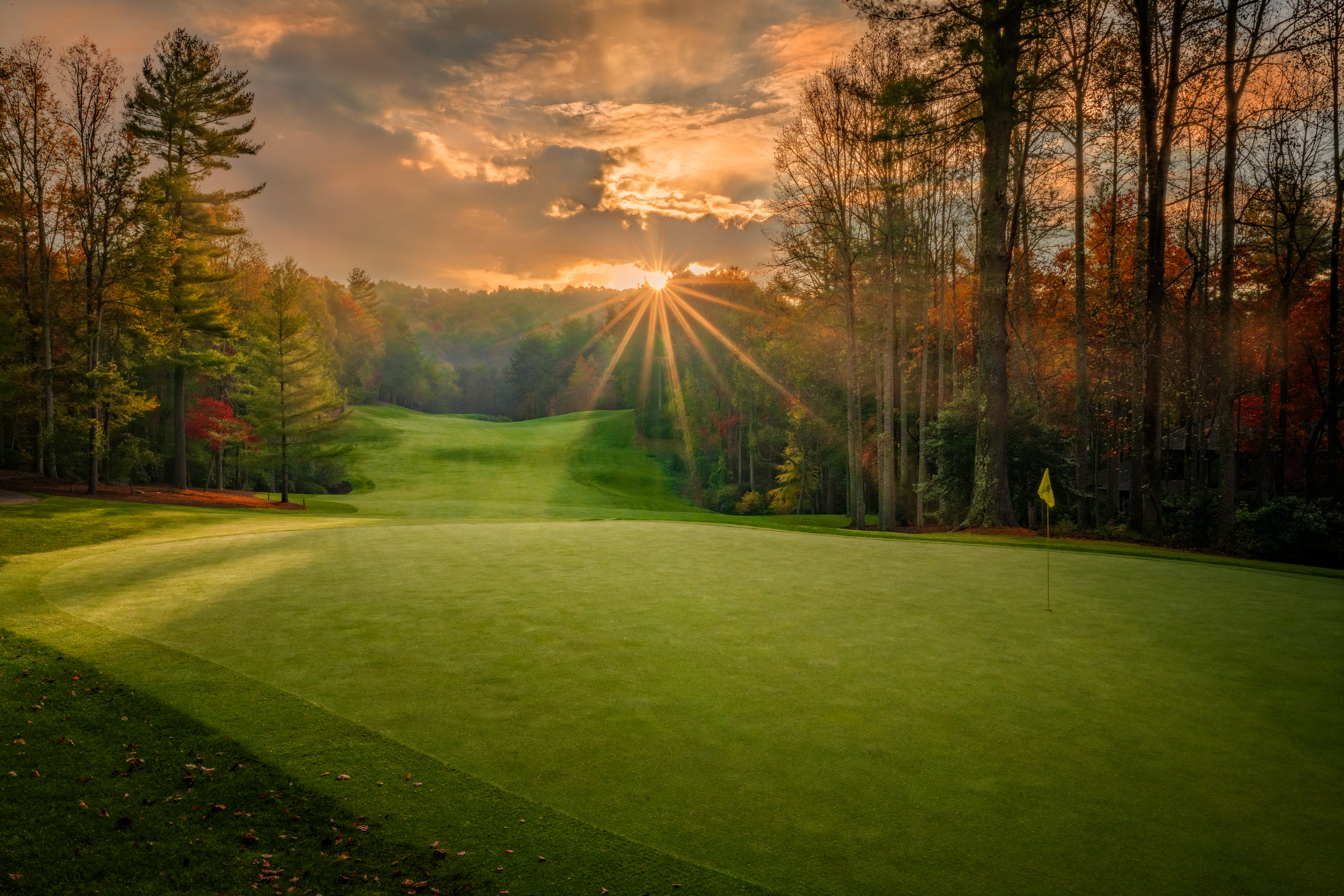
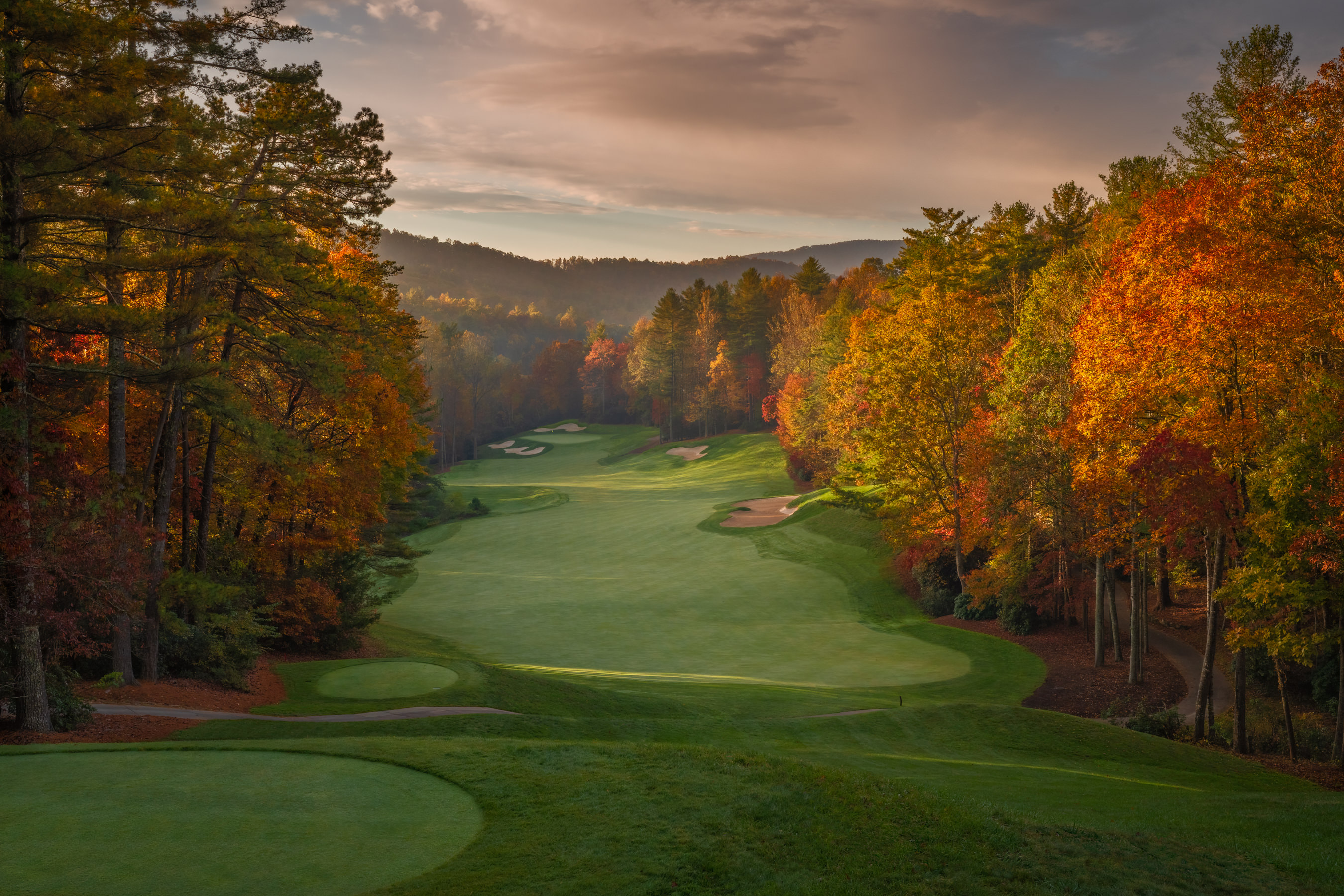
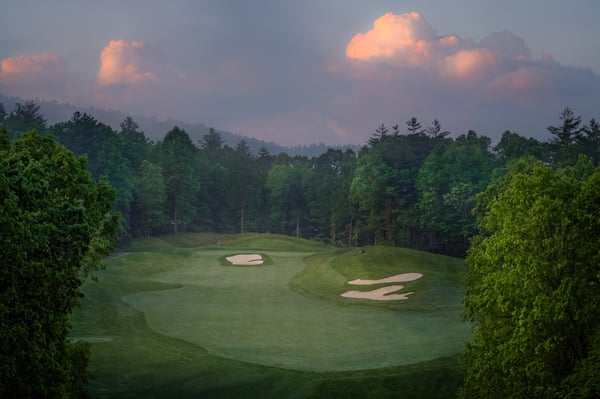



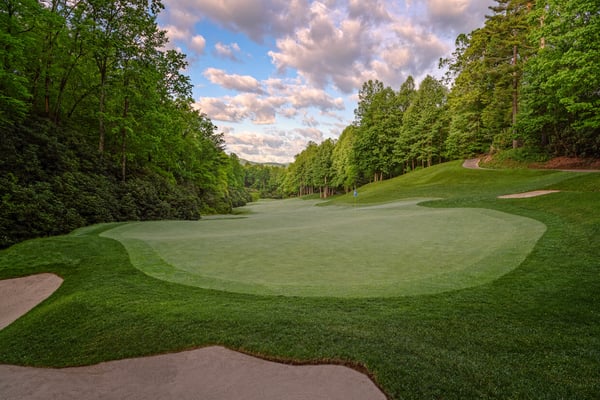


















A picturesque example of outstanding golf in a beautiful mountain setting which presents the golfer with a dramatic, long-range view of the Blue Ridge Mountains. The first shot is played across a narrow ravine to a generous fairway. The short second shot is a slight uphill to a wide putting surface carved into the natural hillside.
The shortest par 3 on the course, the second hole has been etched out of the Rhododendron and Mountain Laurel forest which is so unique to the North Carolina mountains. At a glance, this par 3 appears to be a realistic birdie opportunity. While relatively short, it requires a very good shot to make the hole simple. This hole will be remembered for the subtle contoured green which makes a par a good score.
A classic example of a strategic par 5. The tee shot should favor the left center portion of the fairway to ensure a level lie and proper angle for attacking this left-to-right green. The gentle, rolling terrain frames the approach on the second shot of this natural golf hole.
Number 4 is a downhill par 3 which overlooks an existing mountain stream. Club selection will vary with pin location on the deep green. Nestled in a valley between two hillsides, the green is supported by a collection of depressions and sand traps which flank the left side.
This beautiful par 5 features a downhill, tree-lined look with a small pond to the left side of the green. This hole is carved into the hillside, sloping from right to left. The linear hourglass green is very deep and allows many pin locations and yardage adjustments.
One of the most challenging par fours on the front side, this long, uphill hole will require a well-struck drive to the wide, sloping fairway. The second shot, which plays severely uphill, must carry all the way to the three-tiered green to ensure a two-putt par. Take your par and go on to the next hole.
This hole features a dramatic downhill tee shot. The dogleg left turns around a left side fairway bunker. A well-positioned tee shot in the fairway will leave a short approach to the green, which is a right-to-left oval shape with subtle contours. This is a type of hole you'll only find on a mountain course.
This hole begins with a tee shot over a ravine to a wide fairway. The landing area slopes left to right in this mid-length par four. You may want to favor the left center to take advantage of the roll from the cross slope. The most challenging aspect of this hole is the second shot to an elevated two-tiered green.
This dramatic downhill par 3 features a 180-degree view of the Blue Ridge Mountains. Due to a drop in elevation of as much as 125 feet, tee shot club selection will change by as much as 2 or 3 clubs. The large green is guarded on the front right and back left by bunkers.
The tree-lined, dogleg right fairway offers a panoramic, long-range view from the tee. A well-placed tee shot, slightly left of center, sets up a short downhill approach shot to the protected, well-contoured green.
The longest par three requires a precision long iron. The left side features native Laurel, wildflowers, and Rhododendron, which frame the wide, pine-bordered green. Rolling contours, a pot bunker and a moving stream provide the challenge of accuracy.
As one of the more demanding holes, a premium is placed on the mid-length approach shot. A narrow fairway with no fairway bunkers and with long rough commands precision off the tee. The narrow green sports bunkers short left and long right.
This short par 5 is an opportunity for a birdie if the player can split the fairway bunker on the right and the natural ravine to the left on the downhill tee shot. An approach shot to the right should funnel the ball toward the green, which is heavily bunkered and contoured on the left side.
Though a short par four, a gaping bunker in the front of the green requires an exacting approach with an iron. A tee shot across the 50-foot-deep ravine to a wide uphill fairway provides a wonderful sense of how this course fits into its surrounding environment.
A long iron or 3-wood may be selected to position the tee shot for the approach on this short dogleg left. Converging brooks, both right of and in front of the tiered green, force the player to select the approach shot club carefully.
Arguably the toughest hole on the course. This dogleg right par five requires a precision tee shot favoring the left side of the fairway. The layup requires a shot over a creek that will leave a short to mid iron into a narrow green.
Sloping strongly from left to right, this mid-length par three emphasizes the need to hit the green on the tee shot. A shot short or to the right of the putting surface may result in an exceptionally short chip or pitch shot to the flag. Bunkering is cut on the lower right side of the waterfall-framed green.
The 18th hole has many natural features which combine to make this a memorable, dramatic par 4. A swift flowing mountain stream edges the entire right side from the green to the teeing area. Several natural waterfalls add to the beauty and excitement. Carved out of the forest, this hole is framed with White Pines, Tulip Poplars, Rhododendron and Mountain Laurel. The wide landing area sweeps from left to right. The uphill second shot needs to carry the front edge of this two-level large green. The smart shot should favor to the left side of the green, avoiding the ever present stream on the right.




 Void where prohibited.
Void where prohibited.
©2024 Champion Hills Privacy Policy Terms & Conditions Site designed by: Impulse Creative